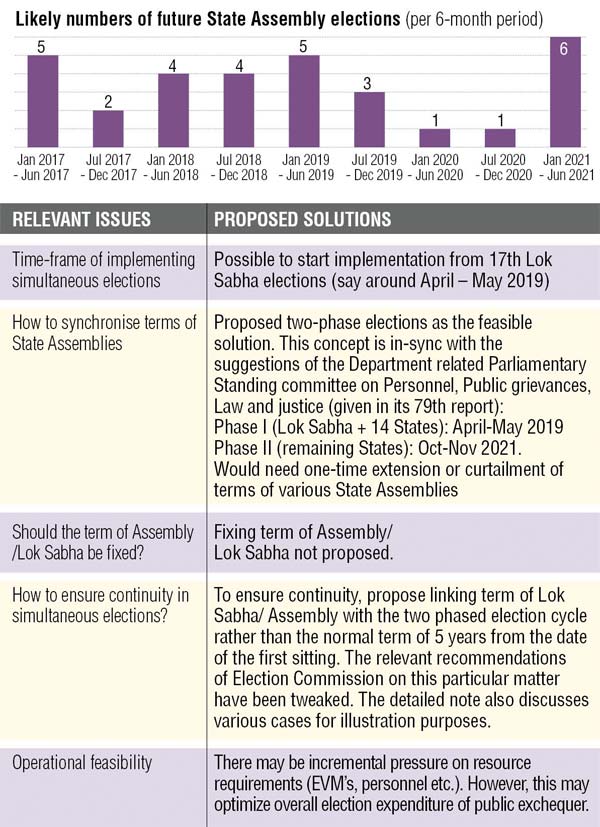
The Union Budget 2017 ushered in three major reforms: advancement of budget presentation date, merger of Railway Budget and scrapping the Plan/Non-Plan classification. But the Budget process itself was surrounded with avoidable uncertainties. The Opposition demanded postponement of the Budget presentation due to elections going on in five state assemblies. A PIL was filed in the Supreme Court. The Election Commission also examined this issue. Later, it directed the Union government to go ahead but not announce any schemes for poll bound states “which may have the effect of influencing the electors”. This is not the first time when crucial policy matters were either questioned or faced speculation because of elections. Will this situation arise again in the future? We can’t be sure because the country stays in a perpetual election mode. In fact, a review of terms of various state assemblies shows that elections to around two to five state assemblies may take place every six months till 2021, as shown in the Bar Graph (inset).
That frequent elections disrupt governance, development projects and delivery of public services is a widely accepted assertion. Take the impact of imposition of the Model Code of Conduct (MCC) for instance. The MCC is enforced from the date of announcement of election schedule till the date they are completed. The MCC imposes serious constraints on state governments (those going to polls) and the Union Government’s activities pertaining to those states. Let us assume an average time-frame of two months for conducting assembly election(s). Using the chart, the MCC is likely to be imposed for about four months or more every year till 2021 (except 2020). Add to that, frequent elections are costly for the public exchequer. For political parties, this is often blamed as one of the key drivers for corruption and black-money, given the constant need to generate fund in-flows.
Hence, simultaneous elections are suggested as a solution to the problem. Interestingly, the idea of simultaneous elections is not new. The first general elections to Lok Sabha and all state legislative assemblies were held simultaneously in 1951-52. That continued till 1967 when the synchronised cycle got disrupted. Despite a wider acknowledgment that frequent elections are detrimental to smooth administrative functioning, why has simultaneous elections not seen any action so far? The true challenge lies in designing its format. Synchronising elections of state assemblies and Lok Sabha would require appropriate one-time extensions/curtailment of Assembly terms. This is difficult and even if it is done, sustaining this synchronized cycle would be another challenge, as the Constitution does not guarantee a fixed term to any Government. It faces pre-mature dissolution throughout its term risking the continuity of synchronisation.
That said, we think it is possible to implement simultaneous elections in the country. We have worked out a feasible solution and have published a detailed note (available on the NITI Aayog website). The key elements of the proposal are shown in the Table.

The need for this structural reform is immediate. The implementation of the suggested solution above would not only require appropriate constitutional and statutory amendments, it would also require wider consensus among key stakeholders. People deserve the best possible administrative system and not merely a passable one. The Constitution does provide sufficient room to make amendments to suit the changing times and needs of the country. This flexibility is not just an enabling tool, but in fact is a responsibility of Governments to provide the best governance. Unlike the past, this time the nudge to seriously consider this issue has come from the highest offices in the country. The Election Commission is also in broad agreement. Hopefully, simultaneous elections will soon become a reality.
The authors are economists with NITI Aayog. Views personal.